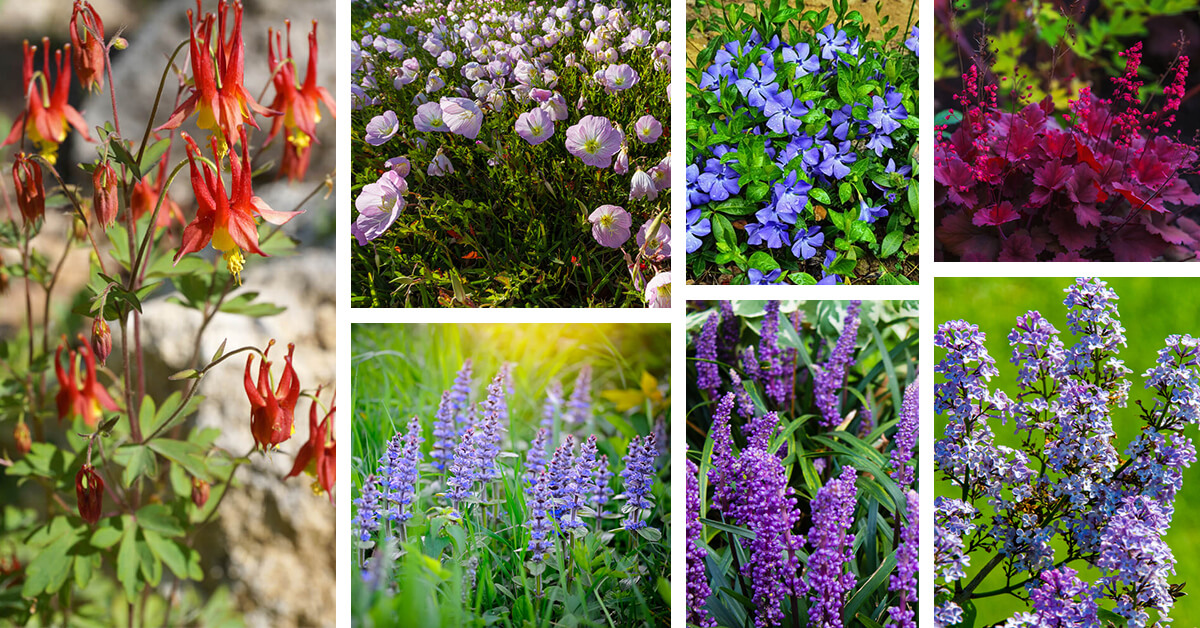Oaks (Quercus spp.) are some of our most beautiful and iconic native trees, but finding plants that will grow under oak trees can be a challenge. There are a lot of factors that play into this, but at the end of the day it comes down to two words: dry shade. Because oak roots grow so close to the surface, they compete directly for water and space with ornamental plants, while at the same time casting them in deep shade.
It’s a tough combination for any gardener, but far from an insoluble problem – after all, oaks grow all over the Northern Hemisphere, and pretty much everywhere you find oaks, you’ll find plants growing under them! If you pick your species judiciously, and follow a few simple rules to keep your oak happy, there’s no need to accept your oak’s dripline as a permanent DMZ for plants!
Below you’ll find a few of the best and most beautiful choices, from ground cover to shrubs, for every taste and every region. No matter where in the country you live, you’ll be able to find plenty of fuel to get you started integrating your oak tree into the rest of your landscape.
Key Takeaways:
- The shallow root systems of oaks compete for water, nutrients, and real estate with ornamental plants.
- The soil under oaks is generally both dry and shady, an unusual combination – but one that many plants are well-adapted to.
- Choosing woodland plants that are native to your region is a great way to ensure that your plantings are successful.
- If you’d rather opt for non-native species, make sure to choose ones that prefer well-drained soil and are at least moderately drought-hardy, because irrigating around oaks can lead to root rot.
- No matter what plants you choose, make sure to keep the needs of the oak in mind when planting: don’t overplant, and avoid planting within a ten-foot radius of the trunk – the critical root zone. This will ensure that competition between trees and understory isn’t too intense.
20 Oak-Friendly Ornamentals for Every Garden
1. Coral Bells (Heuchera)
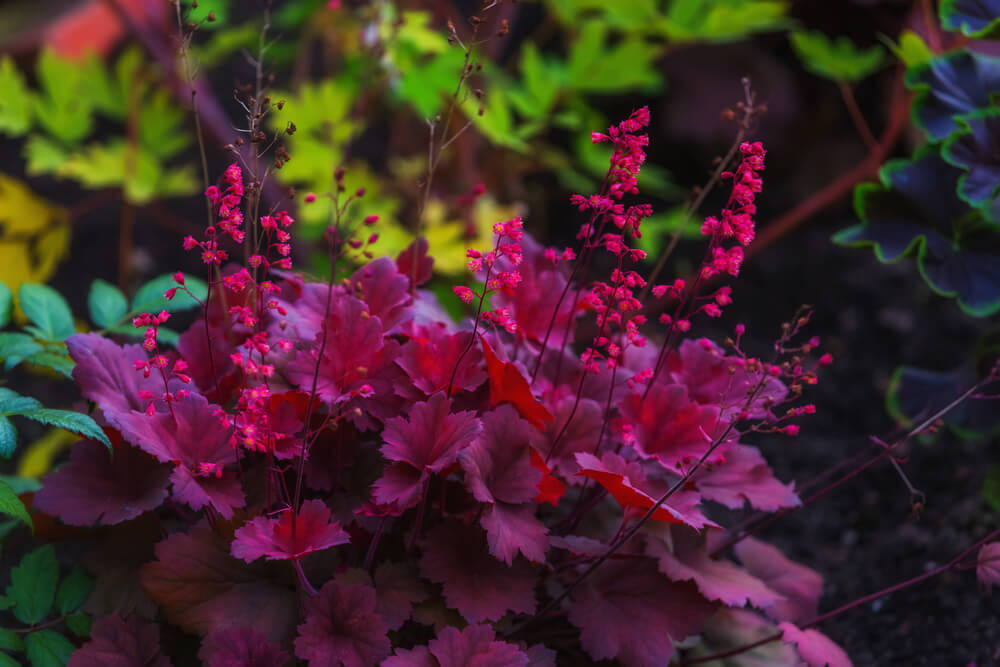
Any list of oak-friendly plants ought to have coral bells at the very top. Plenty of plants will tolerate growing under an oak’s dripline, but coral bells positively thrive in it. In fact, this is pretty much where you find them in the wild: dry, open woods through the American Southwest, from California to New Mexico.
Coral bells are named for their delicate, hanging flowers, which are arranged in attractive rows on long stems. However, they are equally valued for their foliage: mounds of large, maple-like leaves that persist year-round and come in a dizzying range of colors, from bright green to a romantic purple that’s nearly black. Best of all, as the plants grow, you can divide them to get new ones!
2. Crested Iris (Iris cristata)
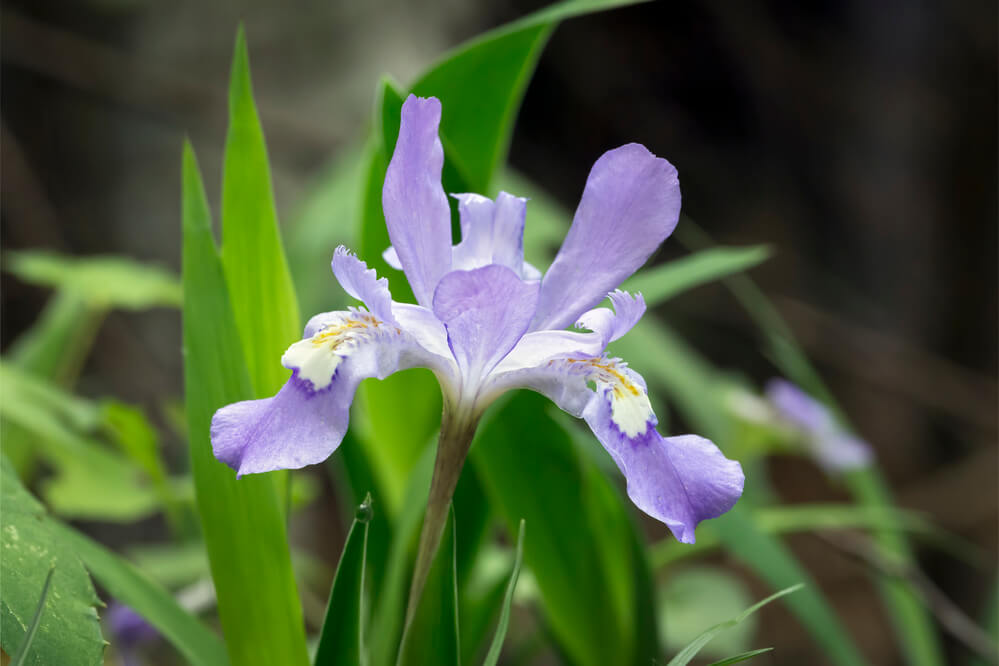
Irises are often recommended for planting beneath oaks because their shallow roots don’t compete with the root systems of oak trees. However, not just any iris will do: many common varieties will be unhappy in the shade of an oak’s canopy, and even if they survive, they often fail to bloom – which is kind of the point with irises!
Crested iris is a clear exception to this rule – which is to be expected, since it’s native to open woods throughout the eastern US. It thrives and spreads in deep shade, forming an attractive ground cover that will explode each spring with baby-blue or lavender blooms. On rich, moist soils, crested iris can quickly get out of hand – but the dry shade found under oak trees is a natural control on the plant’s spread.
3. Creeping Sage (Salvia sonomensis)
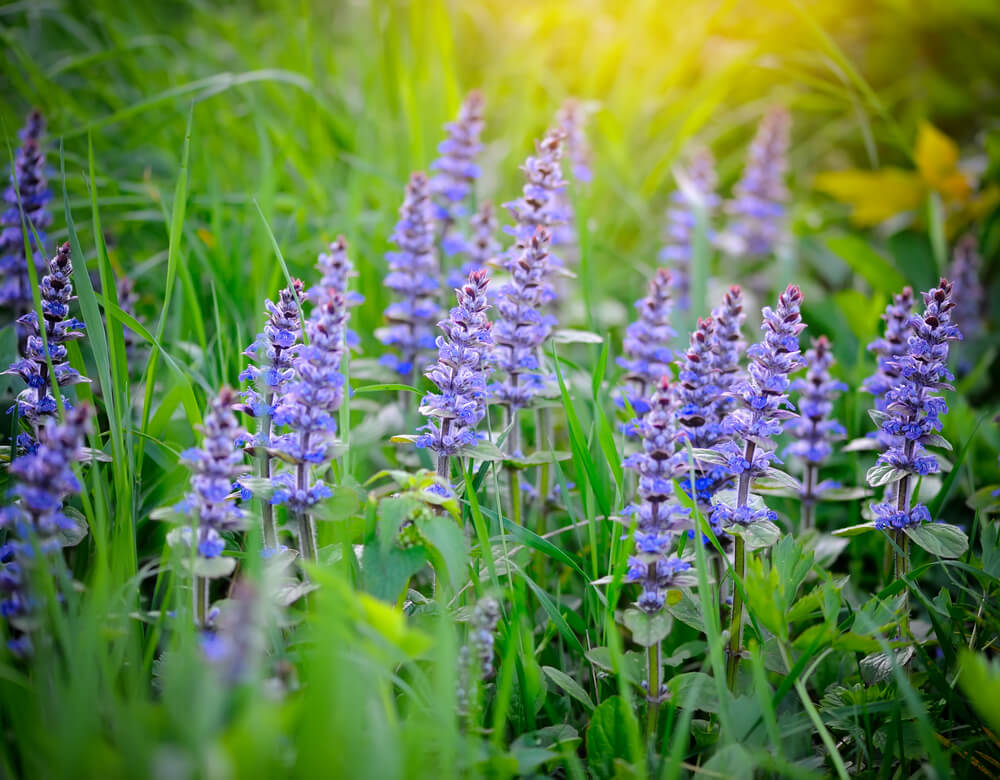
Many species of sage are woodland plants, and grow well even in deep woodland shade. However, creeping sage deserves special mention for a couple of reasons. First, it’s native to California, which makes it suitable for the dry, rocky slopes that characterize much of the inland and southern part of the state. Second – and related to this – it’s exceptionally drought-tolerant, at least when it’s protected from direct sunlight.
Finally, creeping sage – true to its name – spreads horizontally to a much greater degree than most native sages: well-cared-for plants can expand to form patches ten to fifteen feet wide, never getting more than about a foot high. This makes it ideal as a ground cover for “problem spots” where nothing else seems to grow.
4. Turk’s Cap (Malvaviscus arboreus)
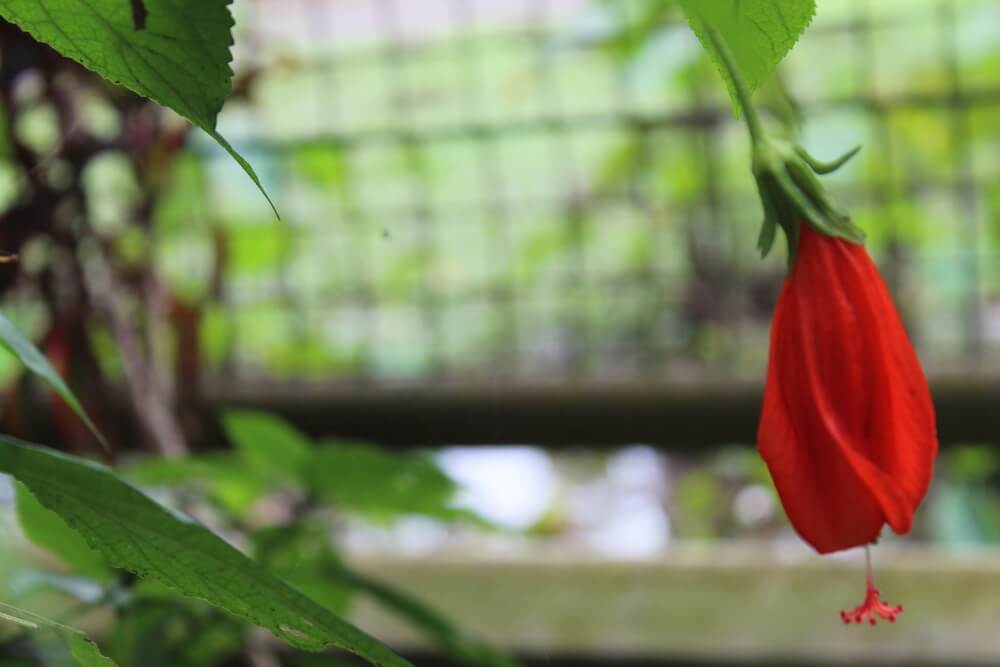
Turk’s cap is a common understory plant in the dry post oak woods of central and northern Texas, but is just beginning to receive its due as an ornamental. Looking at a healthy patch of the plants, it’s hard to see why it has taken so long to catch on.
Structurally, it fills a unique niche between perennial and shrub; it has large, attractive foliage, and in the heat of the summer blooms in a profusion of small but eye-catching flowers. These are attractive to butterflies and hummingbirds as well as humans! It’s a hardy, underrated native that will feel – and look – right at home in the shade of a spreading oak.
5. American Beautyberry (Callicarpa americana)
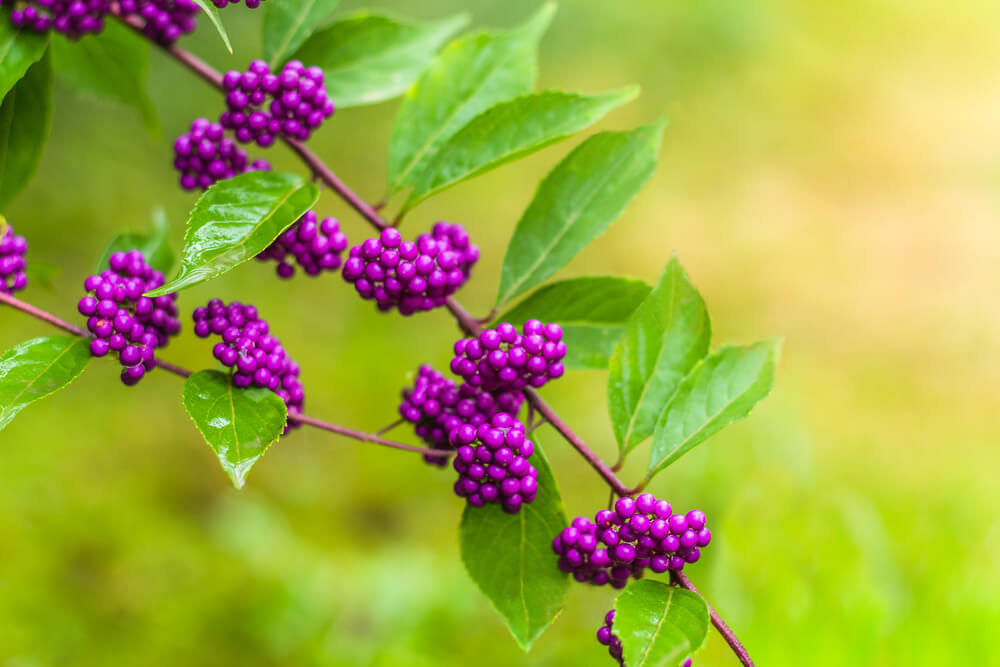
American beautyberry is native to the southeastern United States, and is often found growing right alongside and underneath oaks — talk about proven success! It’s considered a native shade-garden “superstar” not only for its ease of cultivation, but its large, vibrant green foliage, as well as its almost shockingly purple berries, which really have to be seen to be believed. (They attract all the right kinds of wildlife, too!)
If you decide to include beautyberry, or any kind of shrub, in your landscaping, take extra care to avoid the critical zone, and make sure to go with the smallest sized specimen you can find. This will minimize digging, which in turn will minimize disturbance to the oak’s root system. Smaller beautyberries will need a bit of extra care (i.e., water) while they establish, but once they do, they are surprisingly drought-tolerant.
6. Columbine (Aquilegia canadensis)
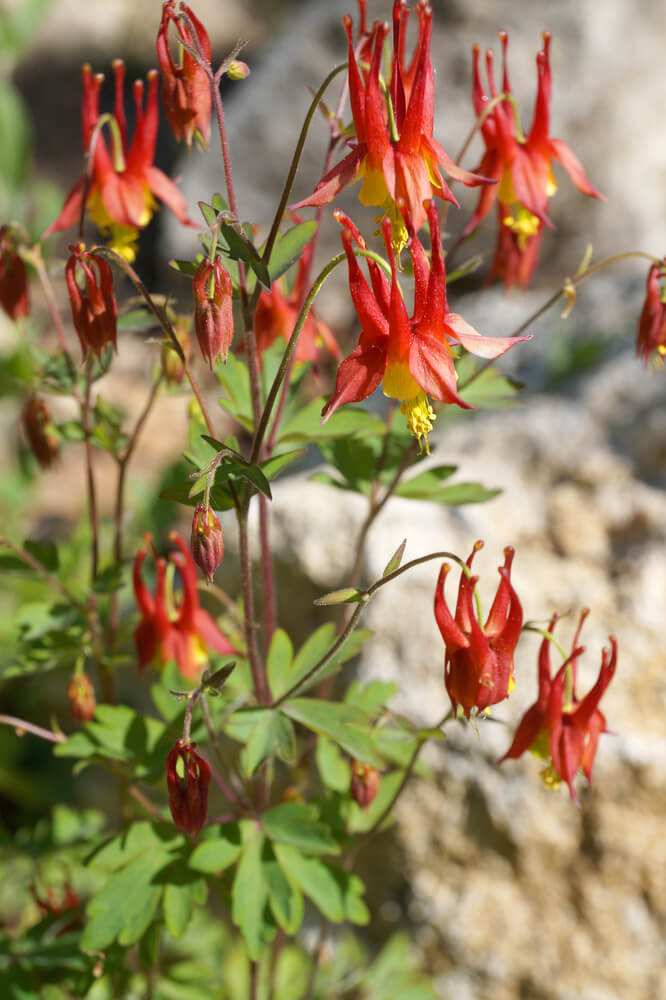
Columbines are justly famed for their showy, unique flowers, which come in a variety of colors depending on the species. Our most common native columbine (Aquilegia canadensis) has two-toned red and yellow flowers, which emerge in early spring and attract more than just compliments: hummingbirds and butterflies love them! Even after the flowers have died off, their geranium-like foliage makes an attractive, albeit somewhat sparse, ground cover.
Although there are dozens of species, varieties, and hybrids available, native columbines should be your first choice when gardening around oaks, if for no other reason than that they’re uniquely adapted to such environments. Natives will generally bloom longer and hang tougher than non-native species – which is always a plus in unique habitats like oak shade.
7. Stonecrop (Sedum)
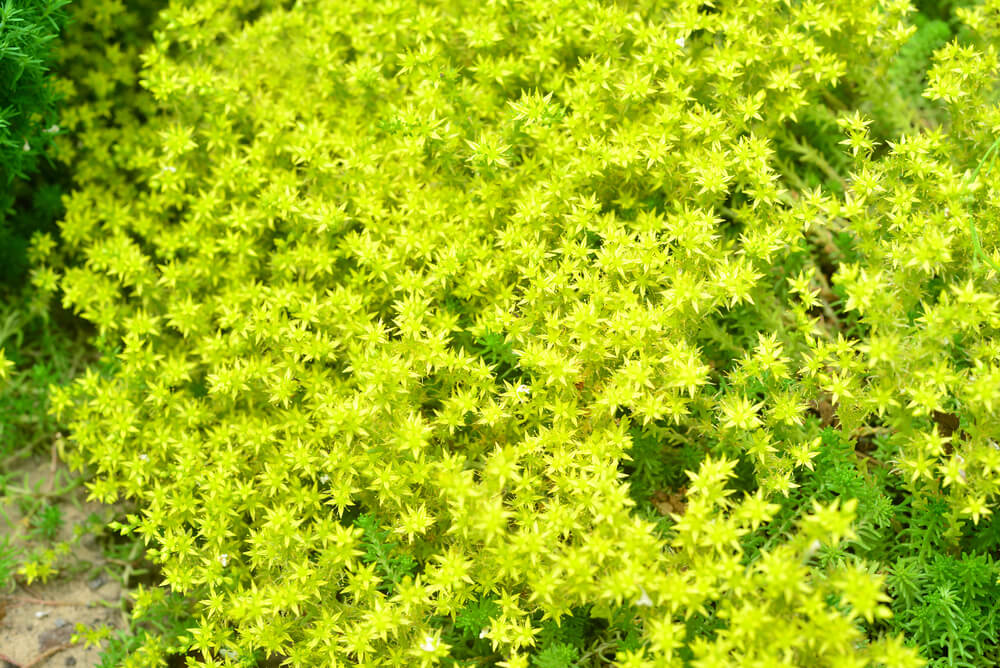
Stonecrop, true to its name, is a specialist of dry spots, and will indeed grow seemingly on bare rock! Its succulent foliage is highly drought resistant, and it establishes via cloning, which means you can get more plants simply by breaking off pieces of existing ones! In the right gardens, stonecrop can produce a unique, moss-like ground cover that’s almost bomb-proof.
However, you have to choose your species judiciously – which shouldn’t be a surprise, since there are over 300 to choose from! Most stonecrops, and most succulents generally, are full-sun plants, and won’t perform their best in shady spots. Choose species and varieties that are adapted to woodland environments, like moss stonecrop (S. acre) or “Hopewell.” Also be aware that stonecrop’s shade tolerance decreases along with the temperature, and in areas with harsh winters it really needs full sun, whatever the species.
8. Bracken Ferns (Pteridium aquilinum)
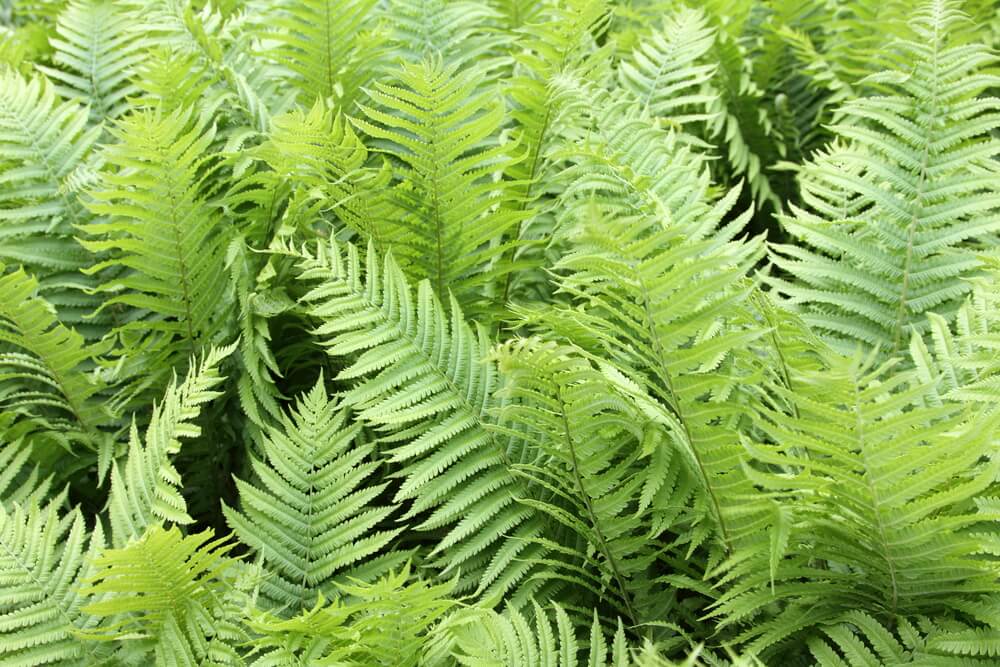
Bracken isn’t just native to North America — it’s found on every continent except Antarctica. In the US alone it grows as far north as Alaska and as far south as Florida, which should give you some idea of its adaptability! In fact, it’s one of our hardiest native ferns, and its stunning sprays of foliage can lend an almost tropical feel to even the driest gardens.
Despite geographic evidence to the contrary, bracken isn’t a plant for every garden. It does best in part shade rather than deep shade, so it may not do well under dense canopy. However, bracken also has a tendency to ramble, and a bit of shade will go a long way toward keeping its wandering ways in check. One more consideration with bracken is its toxicity, which makes it a plant to avoid if you have small children, horses, or particularly curious pets.
9. Evening Primrose (Oenothera)
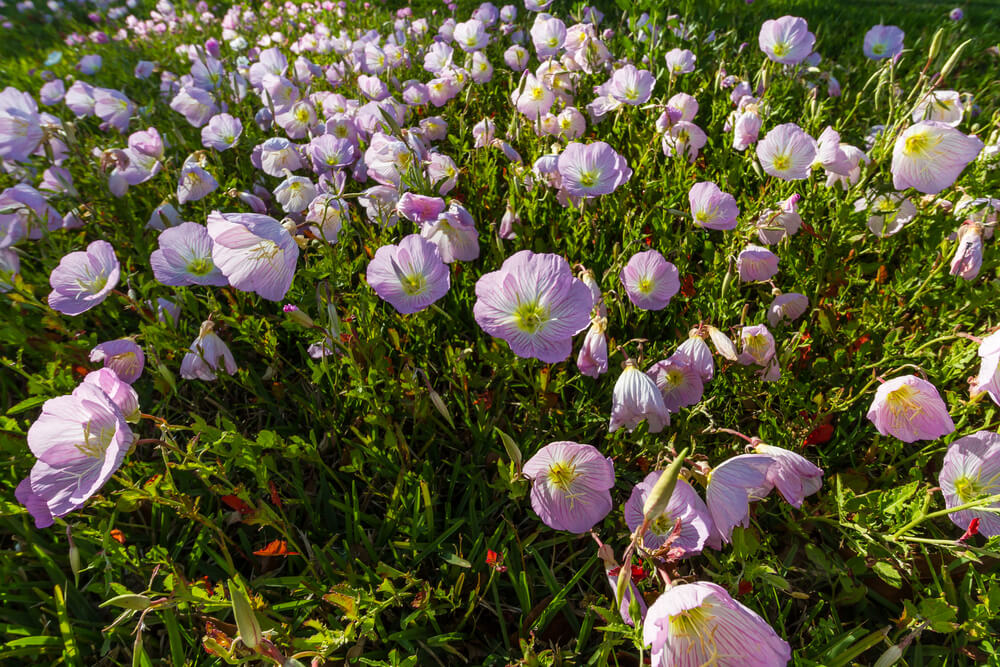
Evening primroses are one of North America’s great contributions to horticulture: several of the 100-plus species native to the continent have become quite popular in gardens worldwide, and have even become naturalized in Europe. Their popularity can be explained by their beautiful, long-lasting blooms – which, depending on the species, can last from March to September – and their hardiness, both of which make them great candidates for planting with oaks.
Choose species that are native to the Southwest, as these are best-adapted to the dry shade beneath oaks. Showy evening primrose (O. speciosa), a Texas native, makes an attractive, self-seeding ground cover (although take care not to let it take over!). Showy evening primrose is also a great choice because its flowers remain open during the day – unlike those of most species, which open in the evening and close in the morning. Other good choices include Berlandier’s sundrops (O. berlandieri) and common evening primrose (O. biennis).
10. Bugleweed (Ajuga reptans)
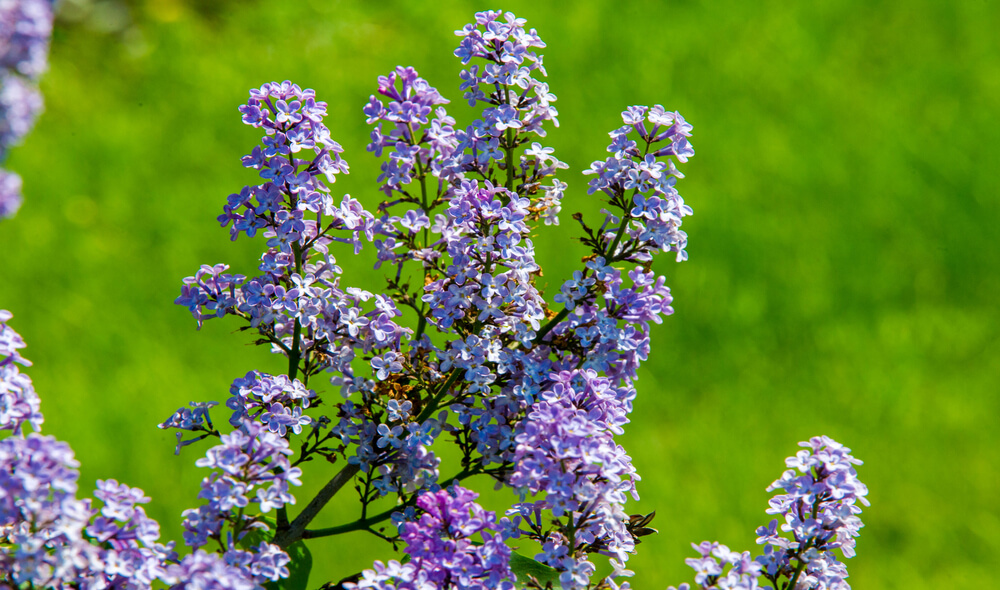
Bugleweed is one of the most common recommendations for shade gardens, and there’s no doubt it’s a true shade superstar, providing both ground cover and prolific (and quite beautiful) flowers without much in the way of watering or fertilization. It’s among the most dependable and low-maintenance shade plants available, and it will perform admirably even in the deepest, oak-leafiest shade.
If it sounds like there’s a “but” coming, well, it’s just this: plenty of gardeners have found out the hard way that bugleweed isn’t always satisfied with one section of the garden. It has the tendency to spread, and getting it out is often quite a bit more work than getting it in. This doesn’t need to be a deal-breaker, but you should be prepared to monitor your plants for signs of a Napoleon complex.
11. Plantain Lily (Hosta)

Plaintain lilies – often just called hostas – are native to Japan and eastern Asia, where they inhabit open woodlands and forest edges. Interestingly, they are more closely related to agaves and yuccas than they are to plantains (Plantago) or lilies (Lilium). The “lily” part of their common name comes from their lily-like blooms, and the “plantain” part from their lush, heart-shaped foliage, which resembles the leaves of common plantain (P. minor).
Hostas are popular with gardeners for their hardiness and shade tolerance, and these qualities help them thrive under oaks. In fact, in many parts of the country, hostas will need the protection of a larger tree to keep from wilting in the summer sun. Oaks in particular are valuable “nursery trees” because of their persistent leaf litter. In the winter, this natural insulation will help protect hosta roots from hard freezes – and in the spring and summer, it will repel snails and slugs, which can be serious pests.
12. Cast Iron Plant (Aspidistra eliator)
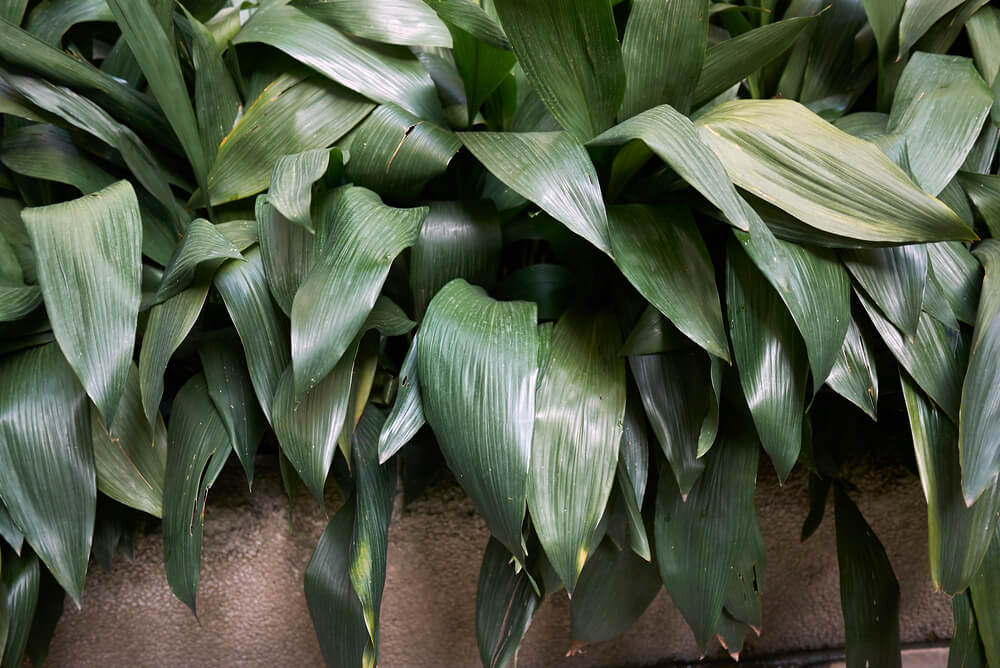
They don’t call it “cast iron” for nothing: Aspidistra is one of the most shade-tolerant, drought-tolerant, and all-around neglect-tolerant plants available. Cast iron plants are often recommended as substitutes for hostas (which are distant cousins), and will have no problem growing under your oaks.
In addition to its hardiness (which has also earned it the name “barroom plant,” on the theory that it would grow in an old-timey spittoon – yuck!), cast iron plant is also pretty much impervious to pests and diseases. If you’re looking for a maintenance-free specimen, border, or even ground cover, a cast iron plant (or plants) might be just what you need.
13. Rock Rose (Pavonia lasiopetala)
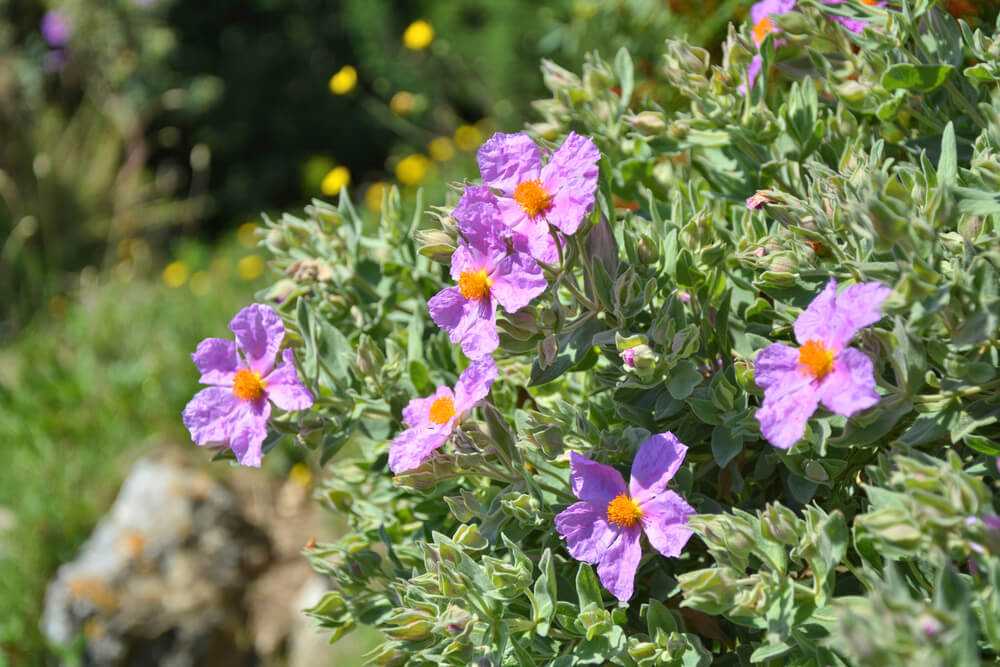
Rock rose is one of a very few plants that truly live up to their common names – well, almost: it’s not actually a rose but a mallow, related to hibiscus. In fact, the flowers resemble nothing so much as diminutive hibiscus flowers, although they’re a shade of pink that definitely justifies the “rose” in its name.
The “rock” part is equally well-chosen, because rock rose will grow pretty much on rocks – literally. This harsh lifestyle is excellent preparation for a life spent under an oak tree’s canopy, and rock rose’s combination of shade tolerance and drought-hardiness means that you can enjoy its bubblegum blooms all summer long.
14. Forget-me-nots (Myosotis sylvaticus)
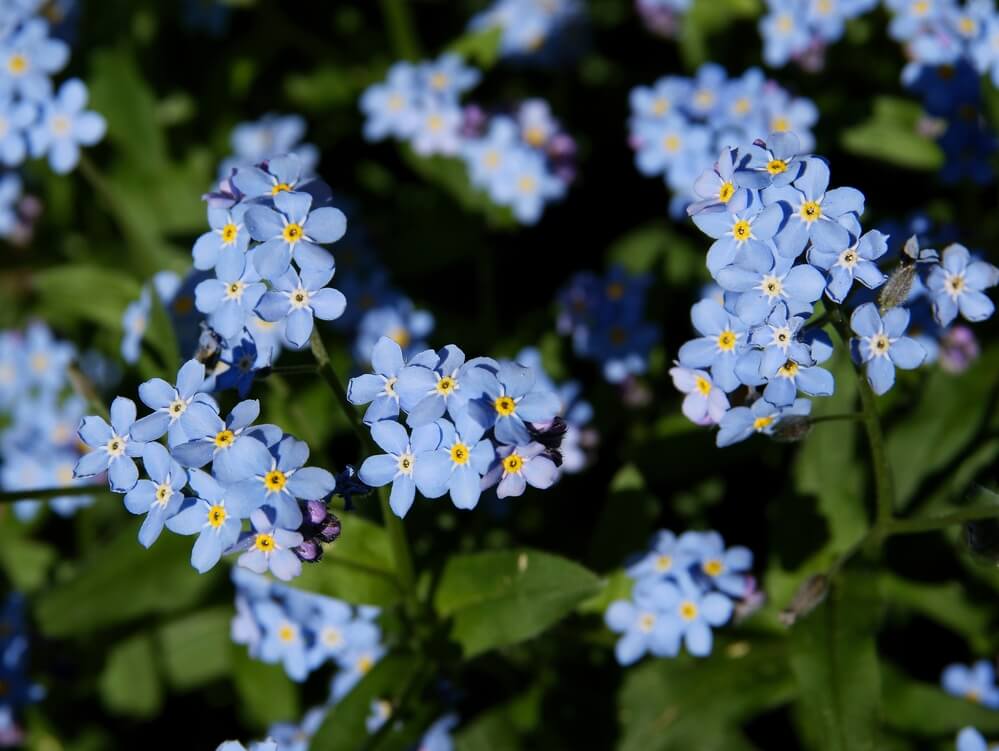
Forget-me-nots are quite flexible, depending on your region: further south, they appreciate afternoon shade, particularly in the summer, and will usually live at least two years. In the north, they like a bit more sun, but often will die back each winter – though in both cases plants self-seed prolifically, so no need to rush out and buy more. Their flowers are almost unbearably precious, and contrast beautifully with their deep-green foliage.
Forget-me-nots aren’t going to be a good choice for deep shade, but can make a great groundcover near your tree’s drip line. Make sure that they’re contained on the sunny side, however, because under good conditions they can become quite aggressive, and even escape cultivation entirely. In regions where the climate controls their spread, however, they can make for a lovely addition to a shade garden.
15. Periwinkle (Vinca minor)
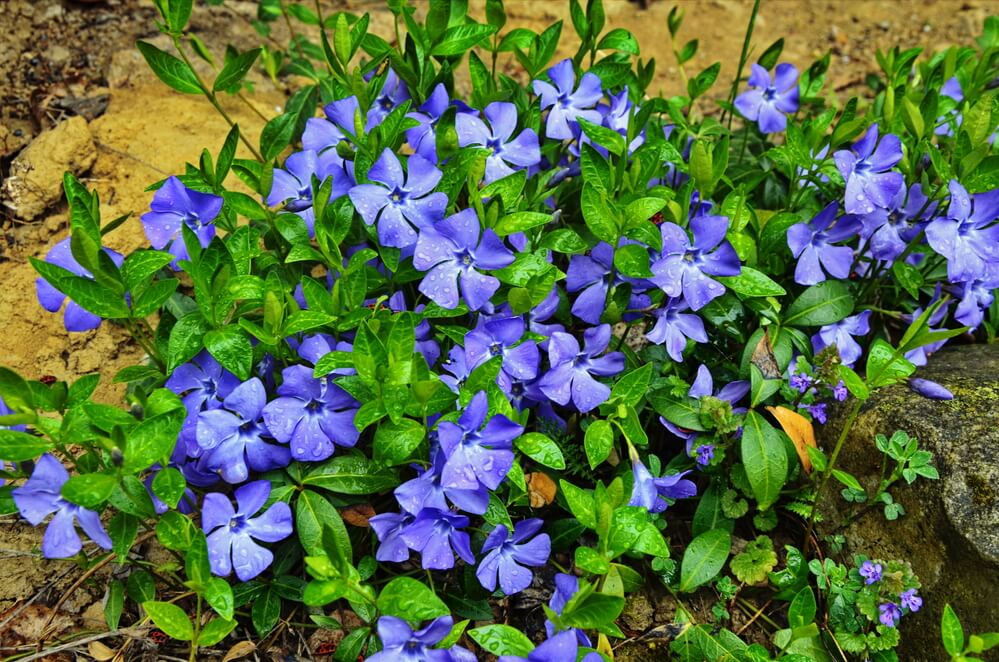
Periwinkles are age-old garden staples, and not for nothing: they can create a lush ground cover that not only blooms beautifully, but retains its deep-green foliage year-round. Periwinkles are also surprisingly drought-tolerant for ornamentals, and as you’ve probably guessed by now, this combination makes them great choices for oak-shaded patches.
That said, periwinkles can spread vigorously when they’re happy — often a little too vigorously. In some parts of the country periwinkles are considered invasive, meaning they are likely to escape and cause problems for native ecosystems. Before planting any plant, you should find out if it’s listed as invasive or noxious in your state — and even if not, to make sure it won’t overwhelm the rest of your garden.
16. Oakleaf Hydrangea (Hydrangea quercifolia)
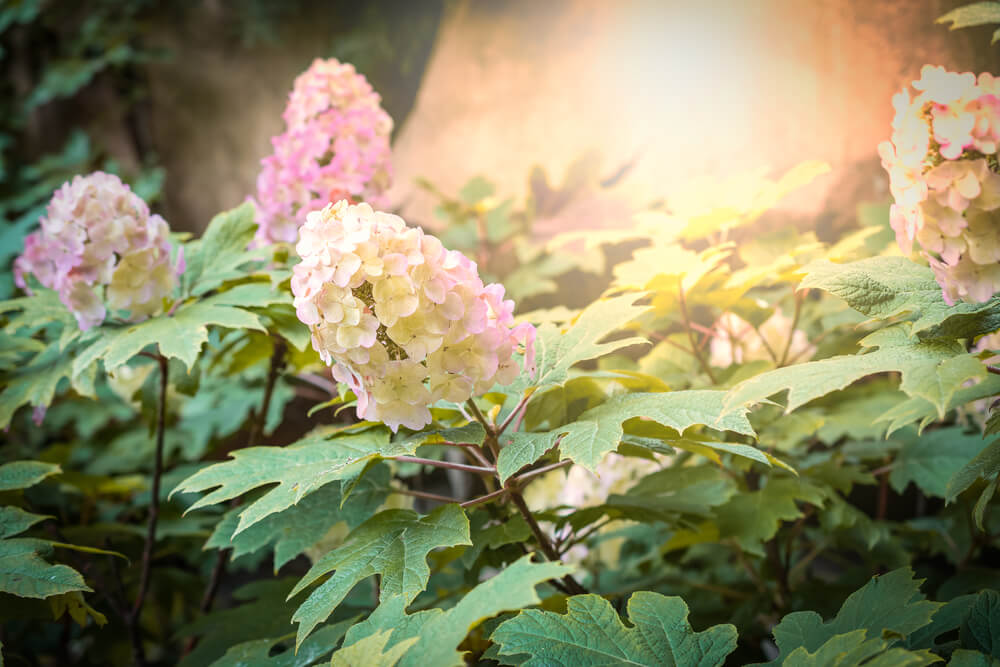
Oakleaf hydrangea has an affinity for oaks that goes well beyond their (allegedly) similar leaf shapes. It’s native to woodland habitats in the eastern United States, where it’s an old hand at making a living in the shade of red and white oaks. Its large, appealing foliage is certainly a major draw, but even more enticing are its profuse sprays of white blossoms, which are a balm for sore eyes in the heat of summer.
While oakleaf hydrangea is an excellent plant for warm gardens, it is susceptible to frost damage in regions with harsh winters, which can lead to reduced flower production, as flowers grow on old wood. Take care to wrap or otherwise protect your plants if the temperature drops significantly below freezing, or you may lose next year’s blooms!
17. Monkey Grass (Liriope muscari)

Another name for lilyturf is “monkey grass” — but Liriope is neither a lily nor a grass. Among the plants on this list, it’s most closely related to cast iron plant, and lilyturf has a comparable reputation for hardiness. The lush, grass-like foliage is plenty attractive on its own, but lilyturf also produces beautiful clusters of dark purple flowers each spring.
It’s often used in edging or garden borders, and under the right conditions it can form a lush, dark-green ground cover that can even tolerate light foot traffic. One thing to note about lilyturf is that it needs to be babied a bit in the first year after planting while it establishes — but once it’s made itself at home, it’s quite drought-tolerant.
18. Blue-eyed Grass (Sisyrinchium bellum & S. angustifolium)
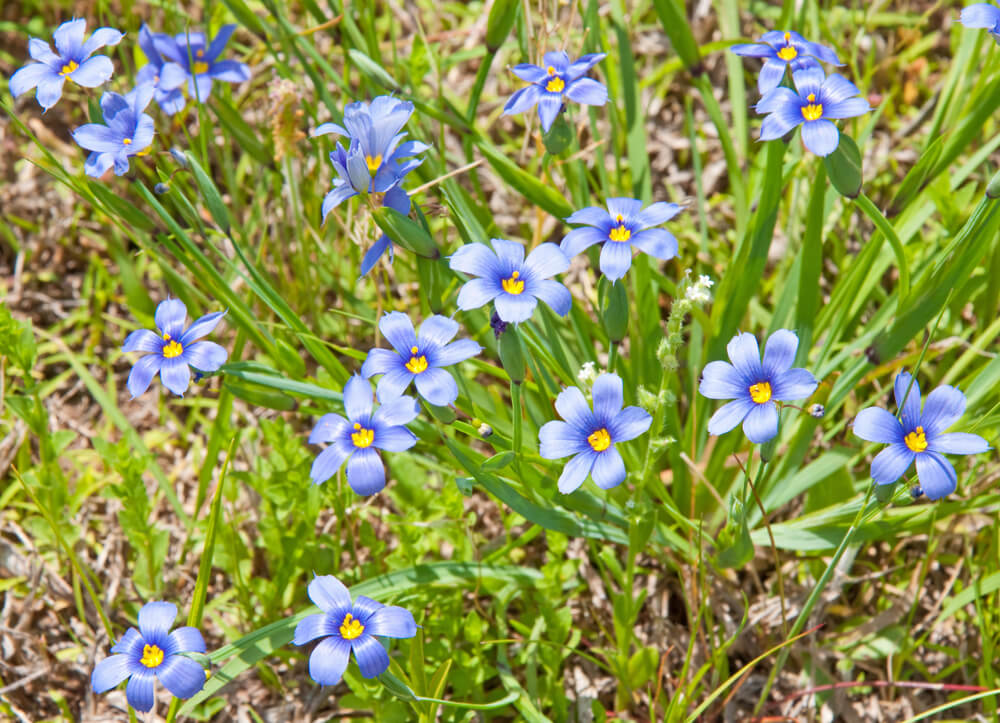
Blue-eyed grass isn’t a true grass, any more than monkey grass is – grass flowers don’t have petals. However, it is a monocot, like other irises, grasses, and lilies, and its slim leaves are quite grass-like. There are many, many species of blue-eyed grass native to North America, and they are all pretty much indistinguishable: about sneaker-height, with grassy foliage and minuscule flowers like tiny crocuses.
Given that one blue-eyed grass is a lot like another, it’s worth choosing a variety that will really do well in the shade of your oak: Western blue-eyed grass is one of the best of these, impervious to drought and shade alike; Bermuda blue-eyed grass (S. angustifolium) is a bit thirstier on average, but it’s easier to find in nurseries, and in many locations will do just fine. Both species spread vigorously via rhizomes, creating a lush carpet of growth that will reliably burst into blue each spring.
19. Azaleas (Rhododendron)
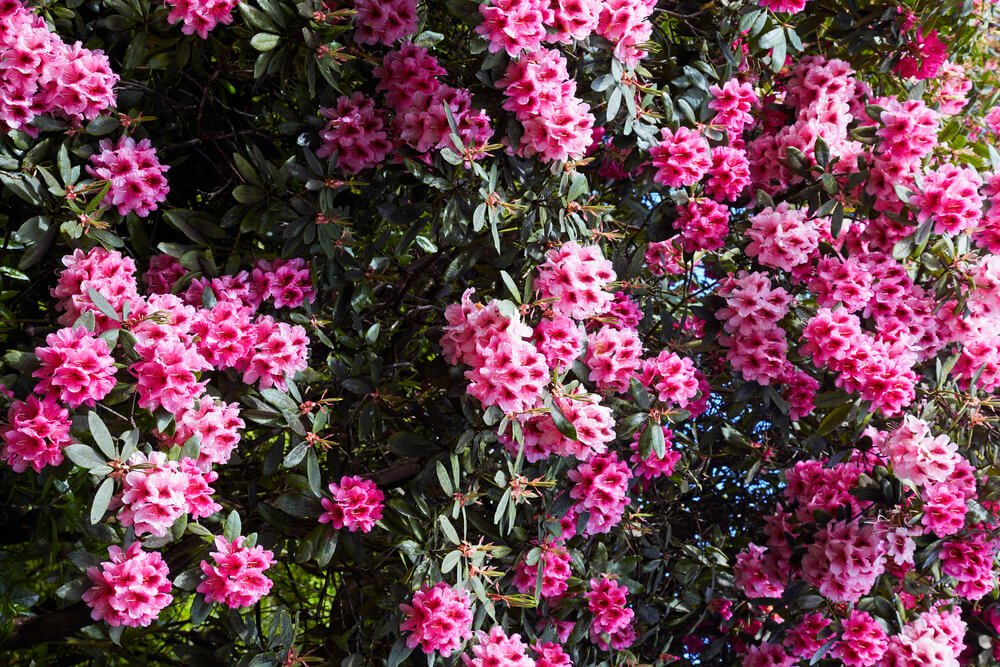
Azaleas are a classic and elegant addition to any garden, but they have a few characteristics that make them particularly well-suited for planting under oaks. They’re adapted to life in the understory, so shade isn’t a problem for them, and while they’re not quite drought-tolerant, they appreciate fast-draining soil, and they tend to be shallowly-rooted — a big plus when planting under oaks. They also get big points for variety: there’s an incredible diversity of species and varieties available, including many that are native to North America.
One word of caution regarding azaleas: although they’re fairly slow-growing, they can reach substantial sizes – which means that they take up a lot more water than, say, a few irises or columbines. Plant them sparingly, and no closer to the tree than the edge of the drip line. This will ensure they don’t compete with neighboring oaks too intensely, which could leave them vulnerable to disease.
20. Inland Sea Oats (Chasmanthium latifolium)
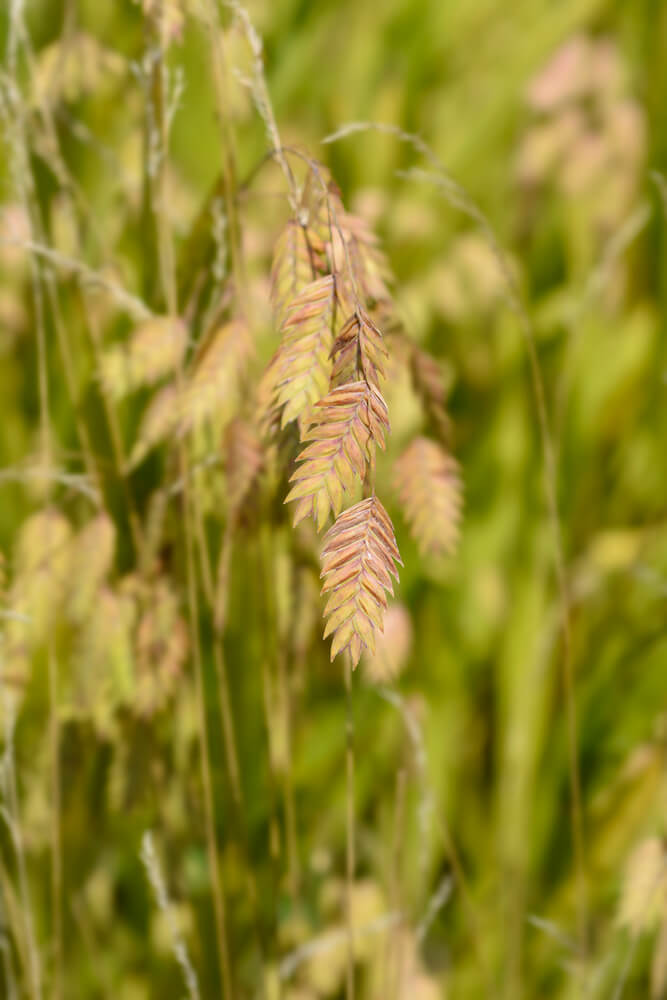
If you’ve been reading this list waiting for a grass recommendation, here it is! Unfortunately, if you were waiting for a turf grass recommendation, well – you’ll have to keep waiting. The truth is that turf grass just doesn’t grow well under oaks, regardless of what an internet search may suggest. Turf grass really needs full sun, and while you might be able to get it to establish, it won’t persist. That said, there are plenty of native bunch grasses that, if they can’t be used as a lawn, tolerate deep shade, and make for beautiful accents.
Inland sea oats are just about the most beautiful of them all. The elegant, almost bamboo-like clumps are pretty enough, but in early summer they also produce attractive, drooping inflorescences that turn from lime-green to coppery brown as the summer wears on. If you’re really set on incorporating grass into your oak plantings, inland sea oats should be near the top of your list!
20 Plants for an Oak-Friendly Garden
[wp-faq-schema title=”Frequently Asked Questions About Plants for an Oak-Friendly Garden” accordion=1]

